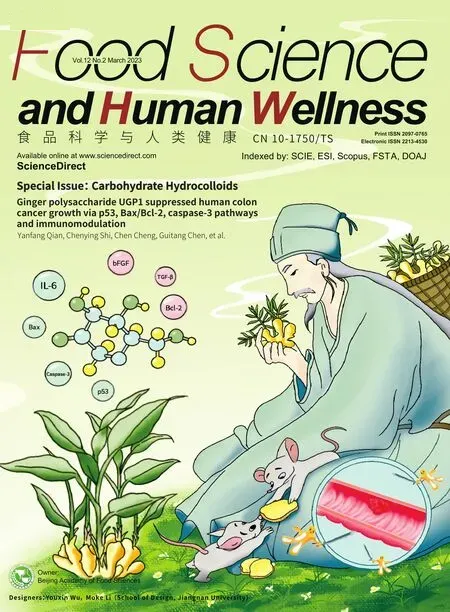Preparation methods,biological activities,and potential applications of marine algae oligosaccharides: a review
Lixin Zheng,Yng Liu,Shijie Tng,Wncong Zhng,*,Kit-Leong Cheong,*
a Guangdong Provincial Key Laboratory of Marine Biotechnology,Department of Biology,College of Science,Shantou University,Shantou 515063,China
b Department of Plastic Surgery and Burn Center,The Second Affiliated Hospital,Shantou University Medical College,Shantou 515063,China
Keywords:Marine algae MAO Preparation methods Biological activities Potential applications
ABSTRACT Marine algae are valuable sources of health-promoting molecules that have been consumed by Asians for decades.Among aquatic f lora,marine algae stand out in terms of high content of marine algae polysaccharides(MAP) such as carrageenan,alginate,fucoidan,laminaran,agarose,rhamnan,and ulvan.When hydrolyzed,MAP generate marine algae oligosaccharides (MAO),which have attracted interest in recent years due to their superior solubility compared with MAP.Besides,MAO have been demonstrated numerous biological activities including antioxidant,antidiabetic,anti-inf lammatory,antimicrobial,and prebiotic activities.Thus,this review summarizes the main chemical classes of MAO,their sources,and the main processes used for their production (i.e.,physical,chemical,and biological methods),coupled with a discussion of the advantages and disadvantages of these methods.Highlights of the biological activities of MAO and their potential applications in food,nutraceutical,and pharmaceuticals would also be discussed and summarized.
1.Introduction
Marine algae,one of the most abundant resources in the ocean,comprise an extremely important component of the marine ecosystem contributing a major feeding ground for marine animals as well as potentially renewable resources for humans [1].Marine algae,including macroalgae and microalgae,are living in a variety of different environments and present in all existing ecosystems on Earth [2].Being the global leader of seaweed producters,China’s annual productions of cultivated seaweed and wild seaweed account for 72% and 27% of the global annual production of the seaweeds,respectively [3].
Marine algae are valuable sources of structurally diverse bioactive compounds and usually classified into three categories based on the morphological pigmentations [4].These three groups are red seaweed (Rhodophyta),green seaweed (Chlorophyta),and brown seaweed (Phaeophyta),whose chemical composition are influenced by environmental conditions (e.g.,sunlight intensity,temperature,pH,salinity and CO2supply) [3,5].The marine algae belonging to the generaGracilaria,Laminaria,UndariaorUlvaare rich in complex carbohydrates.Due to the multiple bioactivities (such as anti-bacterial,anti-virus,anti-oxidant,anti-inf lammatory,anti-cancer activities and regulation of gut microbiota),polysaccharides and oligosaccharides from marine algae show great potential in food,nutraceutical and pharmaceutical area,which raise a great interest [3,4,6-9].
Oligosaccharides are promising functional carbohydrates that consist of 2–10 linear and/or branched monosaccharide units connected byα-and/orβ-glycosidic linkages [10,11].Comparing to the marine algae polysaccharides (MAP),recently studies have investigated the structures and the biological activities of marine algae oligosaccharides (MAO) because of the lower molecular weight (mw),higher water solubility and higher absorption.The nontoxicity and the physicochemical and physiological properties of MAO are favorable for harnessing the health benefits derived from the biological activities of the oligosaccharides.For example,the lower viscosity and the higher water solubility of MAO than those of MAP may encourage the parenteral administration of MAO to reduce viscosity and aggregation issues [12].MAO are strongly influenced by the preparation methods that affect the yield,molecular weight,viscosity,structure and biological activity.
Our previous review provides an overview of the prebiotic potential of MAP [3].In this review,we summarize the research progress of marine algae oligosaccharide from four aspects: chemical classes and marine algae sources of MAO,the production methods,biological activities and potential applications of oligosaccharides.This paper is intended to offer a new perspective on the extraction and sustainability-promoting applications of MAO.
2.Chemical classes and marine algae sources of MAO
MAO are non-naturally occurring molecules that are produced by the degradation of their naturally-occurring MAP counterparts.Hence,chemical classes of MAO are deduced from those of MAP(carrageenan,alginate,fucoidan,laminaran,agarose,rhamnan,and ulvan) [11,12].Functional MAO are primarily comprised glucose,fucose,xylose,galactose,rhamnose,and anhydro-galactose [11].
Brown algae are rich in fucoidan,alginate,and laminaran polysaccharides [13].Fucoidan is a naturally sulfated polysaccharide which depolymerization produces fuco-oligosaccharides [14].Fucoidan consists ofα-L-fucose monosaccharides linked by (1→3)or alternating (1→3) and (1→4)-glycosidic bonds [15].Bing the degradation product of sodium alginate,alginate oligosaccharides are composed ofβ-D-mannuronic acid andα-L-guluronic acid monomers linked by 1,4-glycosidic bonds [16].On the other hand,laminaran is constituted of 1,3-linkedβ-D-glucose monomers and a small number(≤ 10%) of C-6 branches of singularβ-D-glucose [13].
Ulvan is a unique water-soluble sulfated polysaccharide that is derived from green algae,3-sulfated rhamnoglucuronan is one of the major constituents of ulvan [17,18].Sulfated rhamnopolysaccharide is the other main polysaccharide found in green algae.It is mainly composed ofα-L-rhamnopyranosyl monomers linked by alternating(1→2) and (1→3)-glycosidic bonds,and repeatingα-L-rhamnose monomers linked by 1,3-glycosidic bonds [19].
Red algae are the sources of MAO derived from carrageenan and agarose MAP.Carrageenan is a highmw,linear sulfated polysaccharide that has three forms: kappa,lambda,and iota carrageenan [20].The three forms of carrageenan share a basic structural backbone ofD-galactose monomers linked by alternatingα-(1→3) andβ-(1→4)glycosidic bonds [21].The agarose,which degradation produces agaro-oligosaccharides,is composed of (1→4)-linked 3,6-anhydroα-L-galactose in alternate with (1→3)-linkedβ-D-galactopyranose monomers [22-24].
3.Preparation methods of MAO
Preparation methods influence the physicochemical properties and the degree of polymerization (DP),thus,the biological activities of oligosaccharides [10].Unfortunately,the number of naturallyavailable oligosaccharides in general,and naturally-available MAO in particular,is limited.Accordingly,the preparation methods of MAO have to produce an acceptable yield of the MAO [11,25].Currently,there are three methods by which MAO are produced: the physical,chemical,and biological methods (Fig.1).These methods are discussed in further detail in Section 3.1−3.3 and the list of published method employed for MAO are summarized in Table 1.
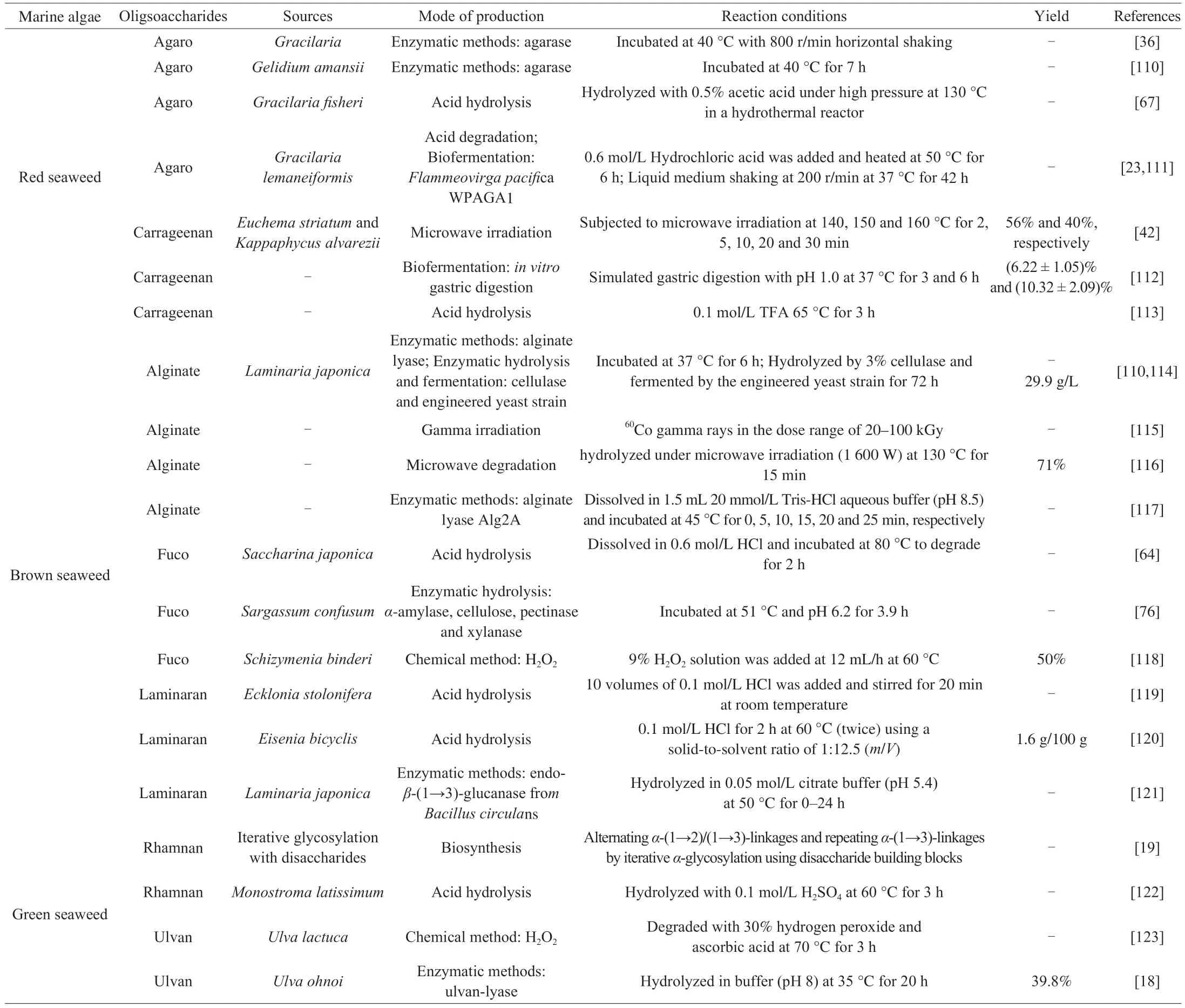
Table 1 Published method employed for marine algae oligosaccharides production.

Fig.1 Chemical classes and the molecular structures of MAO.
3.1 Chemical methods
The chemical methods of producing MAO encompass the acid hydrolysis,alkali extraction,oxidative degradation,and organic synthesis methods.The hydrolysis of polysaccharides is wellestablished and reliable method for the large-scale production of oligosaccharides,due to the simple operation,low cost,reproducible outcome,and satisfactory yield [26,27].
Yun et al.[28]subjected fucoidan,agarose,and carrageenan to the hydrolysis by diluted and concentrated acids (trifluoroacetic acid,hydrochloric acid,sulfuric acid,and acetic acid).Under mildly acidic conditions (the hydrolysis by diluted sulfuric acid or weak acids),the hydrolysis of agarose produces agaro-oligosaccharides being the major products,due to the preferential acid dissociation of theα-1,3 linkages of agarose [28].Agaro-oligosaccharides that are composed of odd numbers of monosaccharides are obtained by the acid hydrolysis of agarose with 1% diluted sulfuric acid at 60 °C for 1.5 h [28].The hydrochloric acid hydrolysis of polysaccharides into oligosaccharides was reported by Chen et al.[29].The authors added HCl into polysaccharide dispersion until a final HCl concentration of 0.4 mol/L and obtain oligosaccharides with various DP ranging from biose to decaose.
The production of oligosaccharides by alkali degradation method is hardly reported in literature and is commonly performed in conjunction with the oligosaccharide production by the other methods.Liu et al.[30]illustrated the alkali degradation of alginic acid.The authors added 2 mol/L NaOH into alginic acid andobtained glucuronide,anhydrous isogluconic acid and 2-deoxy-3-Cmethyltertrahydro acid were obtained.The authors proposed that the alkali treatment cleaves the internal linkages and degrades the alginic acid.On the other hand,the dilute alkali degradation coupled with the microwave-assisted extraction of arabiooxylans to obtain arabinoxylooligosaccharides that comprise 7-24 xylose residues were reported by Coelho et al.[31].
Oxidative degradation is a simple,cost-efficient,and environmentally-friendly method to obtain oligosaccharides from polysaccharides [32].The oxidative degradation employs hydrogen peroxide (H2O2) to generate hydroxyl,superoxide,and hydroperoxyl radical that dissociate glycosidic linkages and degrade polysaccharides.Due to the production of water as the sole byproduct,the oxidative degradation by H2O2is a ‘green’ process that exhibits strong degradation ability under combined effects of temperature and pressure [32].Chen et al.[33]studied the oxidative degradation of MAP fromSargassumfusiforme(PSF).The increasing concentration of H2O2was added to 2.5 mg/mL PSF solution,and the solution was subjected to UV irradiation during stirring at 150 r/min to produce hydroxyl radical and degrade the PSF.The degradation of PSF was enhanced by the increasing concentration of H2O2.
Chemical synthesis is an alternative method to produce MAO from disaccharides or other substrates.Typically,a disaccharide is produced by the glycosylation of a monosaccharide donor and a monosaccharide acceptor.The disaccharides are converted into a trisaccharide by liberating a specific hydroxyl group of the disaccharide and assigning the group to be an acceptor for a glycosylation reaction with a monosaccharide donor.The series of reprotection-glycosylation reactions produce oligosaccharides with the desired chain lengths [34].The chemical synthesis method is challenging due to harsh reaction conditions (high temperature and pressure) and the repeated protection and deprotection steps.Moreover,the method produces low yield and may require the use of toxic reagents and organic solvents [11].
Overall,under controlled reaction conditions,the chemical methods produce high purity homogeneous oligosaccharides.Nonetheless,the major disadvantages of the chemical methods are the tedious operations,harsh conditions,and chemical pollutions.Thus,simple and environmentally-friendly methods of producing MAO are invaluable.
3.2 Biological methods
Due to the highly site-specific activity of the hydrolytic enzymes,enzymatic hydrolysis has been an excellent,environmentally-friendly method to chemical depolymerization for producing oligosaccharides from polysaccharides [27,32].An example of the hydrolytic enzymes is alginate lyase,which mechanisms of action were demonstrated by Zhu et al.[35].The authors derived a novel bifunctional alginate lyase fromVibriosp.and reported that the enzymatic hydrolysis of alginate by the alginate lyase produces trimer alginate-oligosaccharides.On the other hand,Zhang et al.[36]produced neoagaro-oligosaccharides by enzymatic cleavage of agarase at 50 °C for 2 h.In comparison to the non-specific acid hydrolysis,the enzymatic hydrolysis of MAP prevents the hydrolysis of oligosaccharide products.Nonetheless,the methods suffer a disadvantage of the plausible loss of sulfate groups during the hydrolysis process [18].
Biosynthesis is a method that has been applied to produce oligosaccharides and is potentially applicable for producing MAO.In comparison to the chemical synthesis,biosynthesis synthesizes oligosaccharides with targeted DP without involving protection and deprotection steps.Generally,the biosynthesis of oligosaccharides involves several enzymes.The synthesis of laminaribiose is an example of the biosynthesis of an oligosaccharide.Sun et al.[37]reacted maltodextrin (4-7 dextrose equivalent) and glucose,for the biosynthesis of laminaribiose by an enzymatic system that is consisted of isoamylase,α-glucan phosphorylase,laminaribiose phosphorylase,and 4-glucanotransferase.On the other hand,Su et al.[25],described the production of oligosaccharides by adding glycosidase into enzyme reactor,and coupling the enzyme reaction to membrane separation.
Microbial fermentation is a potential production method of MAO,microorganisms have commonly been incorporated in the synthesis of oligosaccharides and enable genetic modifications to introduce the genetic expressions for oligosaccharide production into the biosynthesis pathways of host cells.Hifney et al.[38]reported the production of MAO from fucoidan and alginate MAP by fungal fermentation,the fermentation is indicated by the lowermwof the fermented sample to control (unfermented) sample.Sun et al.[39]suggested the generation of agaro-oligosaccharides byPseudomonas mendocinaNK-01 fermentation under limited nitrogen.Moreover,the alginate lyases and the mannuronan C-5 epimerases derived from the bacterium influence the essential parameters for designing alginate:the distribution ofβ-D-mannuronic acid,the distribution of C-5 epimerα-L-guluronic acid,and the ratio of these monomers (M/G ratio).
In summary,due to the incorporation of enzymes and the specificity of the enzymes,biological methods are the preferred methods for producing MAO under mild reaction conditions.
3.3 Physical methods
The physical methods of degrading MAP to MAO are green,simple,and efficient.Hydrothermal degradation,microwave-assisted degradation,ultrasonic-assisted degradation,ultraviolet irradiation,and gamma irradiation are the common physical methods of producing MAO from MAP.
Hydrothermal degradation utilizes supercritical water to cleave glycosidic bonds and induce depolymerization of MAP.Saravana et al.[40]selected response surface methodology to optimize the parameters for hydrothermal decomposition of fucoidan,and reported the combination of 214 °C degradation temperature,40 bar operating pressure,60 mL/g water to substrate ratio,223 r/min agitation speed,and 5 min degradation time to yield the most effective effect.On the other hand,Suprunchuk [41]obtained lowmwfuco-oligosaccharides by hydrothermal degradation of fucoidan at 100−121 °C and pH 5−6.The authors controlled themwand prevented desulfurization of the fuco-oligosaccharides by controlling the processing time.
Microwave irradiation induces depolymerization of MAP by generating thermal energy that shortens reaction time by triggering dipole rotation.Bouanati et al.[42]prepared carrageenan oligosaccharides (6 731 Da) by microwave irradiation of carrageenan derived fromKappaphycusalvareziiandEucheumaspinosum(68 kDa).The microwave-assisted hydrolysis was performed at a sample concentration of 5 mg/mL at 160 °C for 10 min [42].On the other hand,Quitain et al.[43]obtained 5−30 kDa fuco-oligosaccharides by the microwave degradation of the fucoidan extracted fromUndaria pinnatifida.The authors reported an optimum fucoidan degradation at 140 °C microwave temperature for 15−60 min.Meanwhile,Lee et al.[44]applied microwave irradiation to accelerate enzymatic preparation of functional polysaccharides fromPyropiayezoensis.
Ultrasound-assisted depolymerization of MAP is another method to produce MAO,by applying low frequency ultrasound (16–100 kHz,80−200 W) [45].Ultrasound-assisted decomposition of polysaccharide is a simple,efficient,and low-cost method that is promoted by the induced cavitation phenomenon.Yu et al.[46]applied 2−8 s pulsed 20 kHz (400−1 200 W) ultrasound into the aqueous solution of highmwMAP extracted fromPorphyrayezoensis.At the same dose,ultrasonic degradedP.yezoensispolysaccharides had higher antiproliferative effects thanP.yezoensispolysaccharides,which displayed an improved anti-cancer activity.Zha et al.[47]controlled the ultrasound-H2O2-oxidative degradation of the MAP extracted fromLaminariajaponica.The ultrasound power and the treatment duration are 800 W and 71.28 min,respectively.Meanwhile,the antioxidant activity was conducted onLaminariajaponicapolysaccharides (LJP)and the degradation product,the result showed that the degradation product possessed stronger antioxidant activity.
Gamma radiation-assisted degradation (GRD) and ultravioletassisted degradation (UVD) the excellent methods of producing bioactive chemicals,such as biomedical compounds or molecules.The methods offer the advantages of the decomposition of initial products and the sterilization of final products.Both the GRD and UVD rely on the generation of free radicals,in spite of the differences in the radical generation mechanisms between the methods [48,49].Due to the higher energy content of gamma ray than that of ultraviolet radiation,GRD is more efficient than UVD,despite the degradation efficiency decreases with the increasing concentration andmwof MAP [50].Nonetheless,UVD requires shorter degradation time,because MAP absorb ultraviolet radiation more effectively than the gamma ray [48].
To summarize,the physical methods offer the advantages of simplicity,cost-effectiveness,and non-toxicity.However,optimizations are necessary to improve the purity of the degradation products and the degradation rates of the substrates.
4.Biological activities of MAO
Over the years,the massively diverse marine organisms have been regarded as the potential sources of bioactive ingredients.Being potential bioactive ingredients,MAO exhibit biological activities that are presented in Fig.2.The biological activities are strongly dependent on the concentration,mw,and the monosaccharide compositions of the MAO,and the molecular arrangement of the monosaccharides.The larger and highmwMAO has poor solubility that hinders the MAO to across cell membranes and exerts their biological activities.In the next sections,biological activities of MAO encompassing the antioxidant,anti-inflammatory,prebiotic,antiviral,and antidiabetic activity are discussed.Studies of health benefits of MAO are summarized in Table 2.
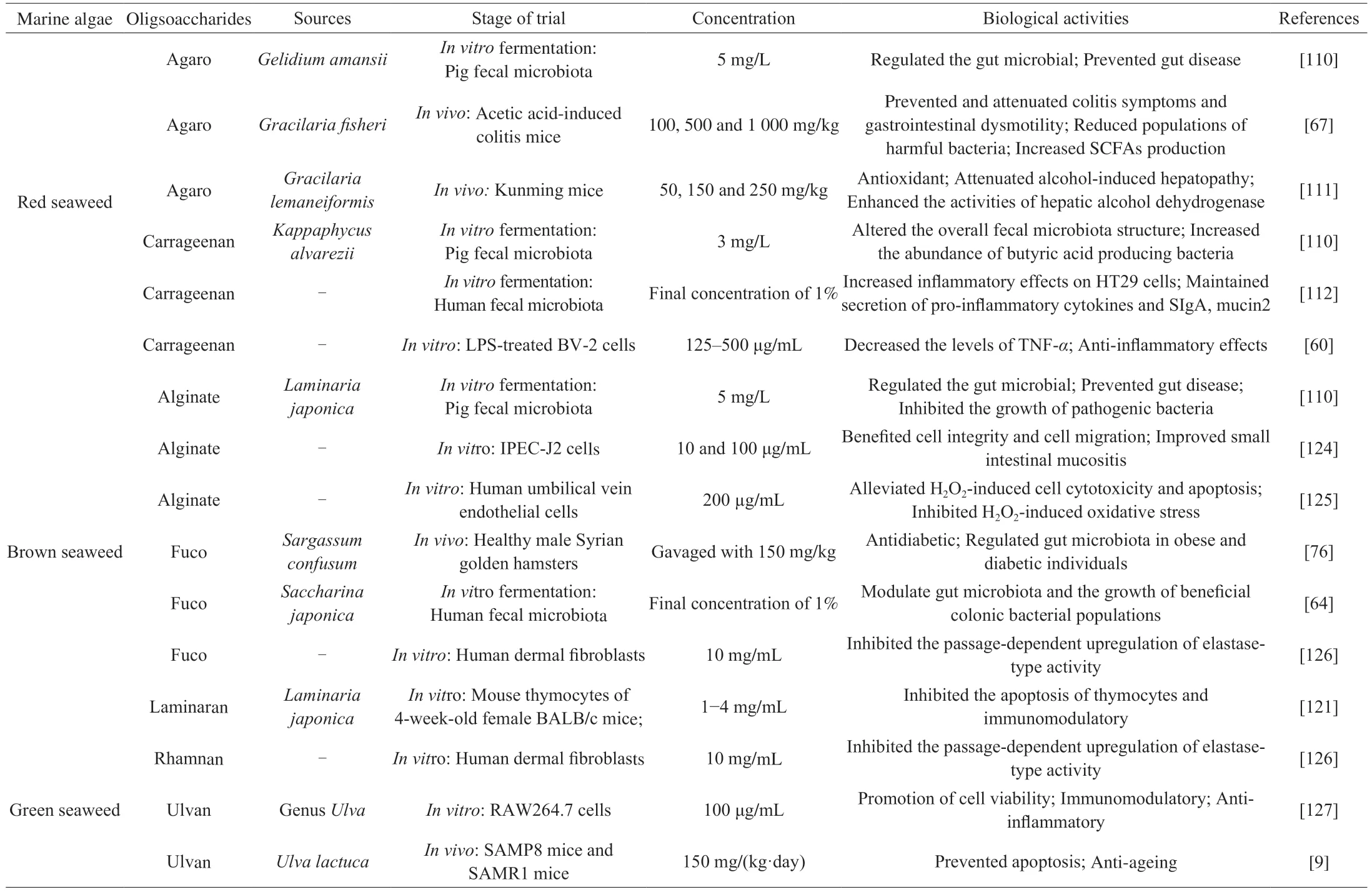
Table 2 Health benefits of marine algae oligosaccharides.
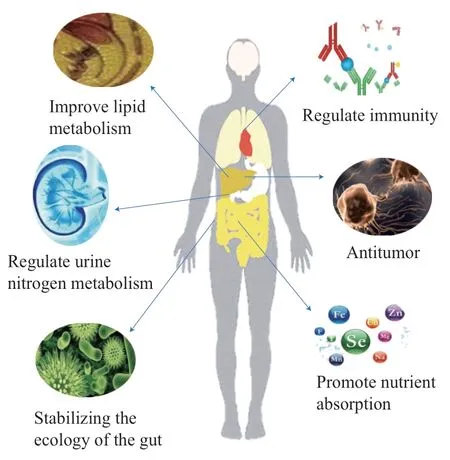
Fig.2 The proposed health benefits of MAO.
4.1 Antioxidant activity
Under oxidative stress,human cells naturally produce reactive oxygen species (ROS) such as hydroxyl,peroxyl,and superoxide radicals.These species have been reported to be associated with diseases such as cancer,diabetes,and heart disease [51].Thus,the antioxidant activity of MAO may prevent or reduce the generation of ROS and warrants investigations.
The study by Rico et al.[52]is one of the studies on the antioxidant activity of MAO reported theinvitroantioxidant activity of MAO derived from a number of algae species.The authors incorporated DPPH radical scavenging activity,lipid peroxidation inhibition capacity,ABTS radical scavenging activity,superoxide radical scavenging activity,and hydroxyl radical scavenging activityinvitroantioxidant assays.The MAO improves serum antioxidant capacity by increasing glutathione content and catalase activity.Wan et al.[53]demonstrated theinvivoantioxidant activity of MAO.The authors communicated an increased total antioxidant capacity in serum of weaned piglets upon administration of agarooligosaccharides.It was suggested that the MAO improved serum antioxidant capacity by increasing the content of glutathione and activity of catalase.Li et al.[54]reported that among the investigated compounds,ulvan oligosaccharides,which exhibit the highest sulfate and uronic acid contents and the lowest averagemw,demonstrate the strongest antioxidant effect on hyperlipidemic mice.The MAO significantly reduce the concentration of the oxidative stress marker malondialdehyde and increase the activity of superoxide dismutase and catalase [54].The effect of sulfate on antioxidant activity of MAO is further illustrated by Gómez-Ordóñez et al.[55]that highmwpolysaccharides have a lower antioxidant capacity due to the steric hindrance that limits the number of hydroxyl and amine groups available for reacting with free radicals.It shows that highmwcarrageenan that exhibits sulfate functional groups demonstrates comparable ABTS radical scavenging antioxidant activity to that of lowmwpolysaccharides.
The potential anti-aging property of MAO,contributed by the antioxidant activity of the oligosaccharides,has received considerable attention over the last decade.As reviewed by Das et al.[56]promising result on anti-aging potential of MAO has been obtained,most of which was derived frominvivoand animal study.The animal study in mice by Liu et al.[9]is one of the studies that demonstrated the anti-aging property of MAO.The authors showed that the sulfated MAO derived fromUlvalactucaandEnteromorphaproliferanormalize the level of advanced glycation end-products and increase the concentration of telomerase.
4.2 Anti-inflammatory activity
Despite the role of inflammation in host defense system against external injury and pathogen invasion,prolonged inflammatory response leads to chronic inflammatory disease [57].MAO inhibit inflammation by regulating immune response.Immune and inflammatory response are activated due to the binding of lipopolysaccharides (LPS) to toll-like receptor 4 (TLR4)-MD2 complexes in macrophages,facilitated by CD14 and lipopolysaccharide binding proteins (LBP) [58].The research by Guo et al.[59]demonstrated the significant anti-inflammatory effect of carrageenan hexamers.The sulfated kappa-carrageenan hexamers competed with LPS for binding to CD14 and inhibited CD14/RELdependent NF-κB inflammatory pathway.Ai et al.[60]illustrated the promising dose-dependent anti-inflammatory effect of kappa and iota-carrageenan oligosaccharides,which significantly reduced TNF-α secreted by LPS-treated BV-2 cells.Similarly,Wang et al.[61]proposed that alginate oligosaccharides reduced the expression of inflammation markers (IL1β and CD11c).On the other hand,Bi et al.[62]suggested that alginate plays a good role in regulating immunity by upregulating TLR4 expression and activating the Akt/NF-κB and p38 MAPK signaling pathway.
4.3 Prebiotic activity
A growing number of studies has proposed the applications of MAO for prebiotic [26].Prebiotic resists enzymatic hydrolysis in the upper gastrointestinal tract and selectively promotes the growth of probiotics such asBifidobacteriumandLactobacillusin the colon [63].
In the study by Zhang et al.[64],the roles of the polysaccharides(SJP) and oligosaccharides (SJO) derived fromSaccharina japonicain selectively promoting the growth of beneficial gut microbiota are described;the study suggests the potential applications of the SJO and the SJP.Li et al.[65]suggested the prebiotic activity of agarooligosaccharides derived from red algae.The MAO are incorporated into the growth-promoting substrates ofBacteroides uniformisL8 isolated from human feces,for mitigating the metabolic disorders induced by high-fat diet.Gut microbiota have been reported to ferment alginate and its derivatives,and produce short chain fatty acids (SCFA) that have beneficial physiological and immunological effects [66].The production of SCFA and the reduction in the population of harmful bacteria (such asEscherichia coli) promoted by the prebiotic effect of MAO derived fromGracilaria fisheriattenuate colitis symptoms and gastrointestinal dysmotility [67].
4.4 Antiviral activity
In recent years,research has been conducted to develop anti-viral drug based on MAO.As suggested by Chen et al.[68],structural diversity of MAO allows targeted antiviral activity towards specific stage of viral infection: the attachment,penetration,uncoating,replication,assembly,or release stage [69].
It has been reported that carrageenan oligosaccharides exhibit antiviral activity by inhibiting viral transcription and replication [70,71].Wang et al.[70]demonstrated that kappa-carrageenan oligosaccharides effectively inhibited the replication of H1N1 and IAV virus.Madin-Darby canine kidney (MDCK) cells can be used to observe the effects of influenza virus strains on cell function.In the report by Wang et al.[70],the kappa-carrageenan oligosaccharides were able to enter into MDCK cells and inhibited the expression of IAV mRNA and protein without interfering with IAV adsorption.Furthermore,lowmwkappa-carrageenan oligosaccharides and their sulphated derivatives demonstrated dose-dependent inhibition on replication of IAV in MDCK cells [71].It was suggested that sulphate functional group and lowmwwere the main factors contributing to antiviral activity of the MAO.On the other hand,MAO derived from green algaeMonostroma latissimumstrongly bound into VP1 protein of Enterovirus 71 (EV71) in dose-dependent efficacy,and inhibited EV71 infection by targeting cellular EGFR/PI3K/Akt pathway [72,73].
4.5 Antidiabetic activity
Diabetes is a global major health issue.It is a chronic metabolic disease characterized by obesity,hyperglycemia,insulin resistance,and damage of pancreatic β-cells [74].In order to develop natural treatment for diabetes,studies have been investigating on the application of natural products for management of diabetes [74,75].Due to their excellent biocompatibility,MAO have been studied for their anti-diabetic activity.For example,Yang et al.[76]described the antidiabetic activity of MAO derived from brown seaweedSargassum confusum(SCO),which influenced JNK-IRS1/PI3K signaling pathway and composition of gut microbiota.SCO increased the abundance ofClostridiumXIVa andLactobacilluswhile suppressed the growth ofBacteroides,Allobaculum,andClostridiumIV.Furthermore,SCO ameliorated hepatic insulin resistance by regulating insulin receptor substrate 1/phosphatidylinositol 3-kinase and c-Jun N-terminal kinase pathway.
Number of monosaccharides composing MAO influenced the degree of diabetes alleviation.MAO composed by odd number of monosaccharides,derived fromGracilariaagarose,were capable of alleviating colonic microbiota dysbiosis,colitis,and type-2 diabetes mellitus.On the other hand,neoagaro-oligosaccharides composed by even number of monosaccharides effectively alleviated obesity and diabetes induced by alloxan and high-fat diet [77-79].
5.Potential applications of MAO
The biological activities of MAO that are discussed in Section 4,have fostered the development of MAO for valuable commercial ingredients.Fig.3 summarizes the potential applications of MAO,and the applications are discussed in further details in Sections 5.1−5.4.
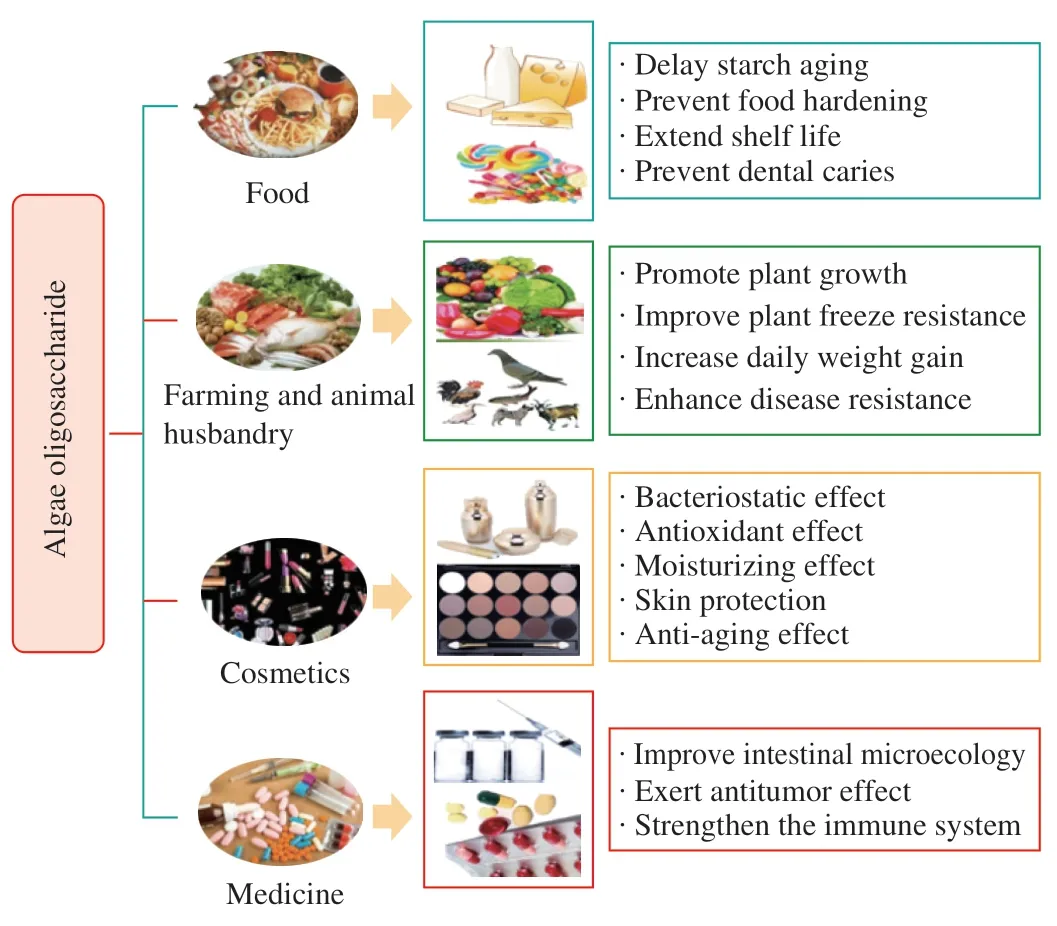
Fig.3 The potential industrial applications of MAO.
5.1 Food and functional food
Functional food,as defined by International Life Science Institute(ILSI),is the food that demonstrates beneficial health effect beyond traditional nutritional benefit [80].As a functional food,MAO are consumed as dried biomass,dietary supplement,or nutraceutical [81].
The demand for prebiotics that effectively maintain intestinal health support the investigations on the applications of MAO for dietary functional ingredients [82].Invitrostudy suggested that lowmwagar and alginate derived from red algaeGelidiumsesquipidalesignificantly increasedBifidobacteriumpopulation and total SCFA production [83].On the other hand,invivostudy indicated that neoagaro-oligosaccharides derived from agarose increase the number ofLactobacillusandBifidobacteriumand decrease the number of putrefactive bacteria in the feces [84].
The consumption of MAO for a food supplement effectively improves physiological functions and reduces the risk of diseases such as inflammation,tumor,type-2 diabetes,and obesity [85].Raman et al.[86]reviewed the applications of lowmwcarrageenan derived fromKappaphycusalvareziifor a functional food that prevents colon carcinogenesis.The lowmwcarrageenan exhibits enhanced solubility and physiological uptake into human colon cancer cells than does the highmwcarrageenan counterpart.The lowmwcarrageenan minimize the risk of colon cancer by inducing cell death,nuclear fragmentation,and apoptotic body formation.On the other hand,obesity greatly increases the risk of hypertension,type 2 diabetes and dyslipidaemia,it is important to control the daily energy intake.The strong-gelling property of alginate regulates appetite by slowing gastric digestion and intestinal absorption.Paxman et al.[87]reported the daily pre-prandial ingestion of sodium alginate reduces mean daily energy intake by 7% .In addition to the incorporation of MAO in functional food formulation as gelling agents,MAO have been added into functional food as viscosity modifiers and stabilizers.Kováčová et al.[88]added carrageenan to improve the viscosity of cream while Soukoulis et al.[89]incorporated carrageenan to improve the stability of whipped foam.
5.2 Pharmaceutical and biomedical
Commonly,biopharmaceutical drugs are formulated on the basis of the active ingredients that are derived from the chemical or biological synthesis or the extraction of biological sources.Due to their suitable molecular size and solubility,oligosaccharides enter the bloodstream easily to exert their therapeutic effects [25].
There are abundant evidences on the antibacterial and antiviral activities of MAO,an MAO-based nasal spray was developed.The clinical trial by Koenighofer et al.[90]demonstrated that an iotacarrageenan-based nasal spray alleviate and prevent the relapse of common cold.A further study by Graf et al.[91]described the synergistic actions of iota-carrageenan and xylometazoline HCl in the formulated novel nasal spray.
Cystic fibrosis is a non-infectious genetic disorder that is characterized by the thick intractable mucus that affects multiple organs.Draget et al.[92]suggested that agaro-oligosaccharides have higher efficacy in modulating the mucus of cystic fibrosis than do the parent MAP due to the lowermwof the agaro-oligosaccharides than that of the MAP and the absence of intermolecular cross-links among the agaro-oligosaccharide molecules.Similarly,Pritchard et al.[93]proposed that alginate oligomers bind into mucin and modify the surface charge of the mucin to reduce the viscoelastic properties of cystic fibrosis-related sputum.
The application of MAO for dental and anti-biofilm materials are encouraged by the biocompatibility and the antibacterial property of the MAO.Roberts et al.[94]formulated a dental care that incorporates alginate oligomers for a non-toxic antibiofilm adjuvant and evaluated thein vitroefficacy of the dental care against oral biofilm-forming pathogens.In combination with the well-established antimicrobial agents,the oligomers potentiate the activity of the antimicrobial agents (e.g.,triclosan) against oral biofilm.On the other hand,when they are the sole active ingredient,the alginate oligomers inhibit the attachment ofPorphyromonas gingivalisandStreptococcus mutans,both of which are associated with dental carious lesion and periodontitis.
The applications of MAO in conjunction with the other drugs have emerged to be the research directions in pharmaceutical and biomedical fields.In a clinical trial,Tsai et al.[95]evaluated the efficacy of lowmwfucoidan for a supplemental therapy to chemo-targeting agent.The authors proposed that the combination significantly improve control over metastatic colorectal cancer.Carrageenan has been combined with polyvinyl pyrrolidone for formulation of wound dressing that exhibits improved physio-mechanical properties such as gelling property,swelling ability,and tensile strength [96].Similarly,the preparation of a novel alginate-based hydrogel was described by Afjoul et al.[97].The authors mixed alginate and gelatin and subjected the mixture to freezegelation to produce a 3D-porous matrix that show biocompatibility and wound healing property.
5.3 Agroforestry and fishery
MAO has been reported to promote growth of plants and marine animals.Shorter oligosaccharide fragments produced by irradiation of iota-carrageenan and kappa-carrageenan displayed an improved growth-promoting effect on rice seedlings under hydroponics condition [96].Similarly,agaro-oligosaccharides prepared by enzymatic hydrolysis significantly promoted the growth ofChlamydomonas reinhardtiiin concentration-dependent manner,in contrary to agaro-oligosaccharides produced by acid hydrolysis [98].The authors proposed that molecular size and unsaturated double bonds in the oligosaccharide structure were the underlying factors for the positive effect of the MAO.On the other hand,MAO promotes growth of marine animal by exerting antioxidant activity and regulating immune system.Zhang et al.[36]extracted and hydrolyzed the agarose extracted from the economically important genus of red algae,theGracilaria,to produce neoagaro-oligosaccharides.The antioxidant and prebiotic activity of the MAO significantly promoted the growth ofProcambaruswhen the MAO were applied as a feed.
In addition to incorporation of MAO in animal feed,efficiency of MAO as a cryoprotective agent to improve the shelf-life of frozen food has been investigated.Zhang et al.[99]reported the protection of kappa-carrageenan oligosaccharides on peeledLitopenaeus vannameiduring frozen storage.Pre-treatment of the shrimp with the MAO prior to frozen storage significantly inhibited the degradation of myofibrillar protein,hence increasing the storage stability.A study by Zhang et al.[100]further demonstrated the cryoprotective effect of carrageenan oligosaccharides on frozen food.The authors suggested that carrageenan oligosaccharides suppressed the growth and recrystallization of ice crystal,thus slowing the damage of large ice crystal to myofibril protein.
Further to cryoprotective effect of MAO on frozen food,effect of MAO on extending post-harvest shelf-life of fruit has been observed.Bose et al.[101]and Liu et al.[102]applied a post-harvest treatment on fruit by subjecting the fruits to agaro-oligosaccharides,and indicated that the MAO inhibited gene expression associated with abscisic acid signaling and cell wall degeneration,thus improved fruit quality and shelf life.
5.4 Cosmetic
In recent years,the demand for safe and high-quality cosmetics has increased consistently [103].MAO are potential cosmetics ingredients due to their excellent biocompatible property,antioxidant activity,and anti-UV property [104].
The potential beneficial effects of MAO in cosmetics encompasses a broad range of functions such as anti-acne,wound-healing,cosmetic-stabilizing,and whitening effects.Capitanio et al.[105]reported the cosmeceutical application of MAO as an anti-acne agent.The authors combined the MAO derived from seaweedLaminaria digitatawith 0.1% zinc pyrrolidone,and established a suppressed growth ofPropionibacterium acnes.On the other hand,Johnson et al.[106]described the wound-healing property of the combination ofα-L-guluronic acid and calcium alginate: the combination accelerates wound closure and minimizes scar formation.Moreover,MAO are potentially used for the whitening agents of cosmetics and the stabilizers of the oil/water emulsion of cosmetics.Zhao et al.[107]improved the oil/water emulsion of cosmetic by incorporating alginate as a stabilizer and the potential applications of fuco-oligosaccharides with 5-10 kDa molecular size for whitening ingredients were presented by Chen et al.[108].The fuco-oligosaccharides exhibit,antioxidant,tyrosinase-inhibition,and anti-melanogenesis activity.
6.Conclusion
Marine algae are abundant and renewable sources of healthpromoting bioactive molecules.Among these molecules,MAO derived from the depolymerization of MAP have received increasing attention due to their non-toxicity and lowermw.The latter favors better water solubility and easier absorption of MAO than MAP.In addition to the improved physio-mechanical properties,a growing number of researches has suggested the various biological activities of MAO such as antioxidant,anti-inflammatory,prebiotic,antiviral,and antidiabetic activities.The demonstrated biological activities support the potential applications of MAO in food and functional food,pharmaceutical and biomedical,agroforestry and fishery,and cosmetic-related area.
7.Future perspective
As a continuous effort to develop MAO into commercially valuable functional ingredients,current research is recommended to devise reliable and lost-cost production method,and study structureactivity relationship of MAO.Production of specific MAO by enzymatic digestion of MAP is a promising method.Nonetheless,industrial application of this method needs to be addressed due to the unavailability of commercial MAP-hydrolyzing enzyme.This issue may be addressed by research development on glycosyl-transferases,which have been studied to produce targeted natural products [109].In addition to enzymatic digestion,microbial fermentation incorporating genetically modified microorganisms is an alternative strategy for industrial production of MAO [26].
Conflict of interest
No potential conflict of interest was reported by the authors.
Acknowledgement
This research was financially supported by grants from the National Natural Science Foundation of China (31901692);2020 Li Ka Shing Foundation Cross-Disciplinary Research Grant(2020LKSFG02E);Natural Science Foundation of Guangdong Province,China (2021A1515011495).
- 食品科学与人类健康(英文)的其它文章
- Colloidal nanoparticles prepared from zein and casein:interactions,characterizations and emerging food applications
- Biological factors controlling starch digestibility in human digestive system
- Development of hyaluronic acid-based edible film for alleviating dry mouth
- Mushroom β-glucan and polyphenol formulations as natural immunity boosters and balancers: nature of the application
- Preparation of multicore millimeter-sized spherical alginate capsules to specifically and sustainedly release fish oil
- Structural characteristics,anticoagulant and antithrombotic mechanism of a novel polysaccharide from Rosa Chinensis Flos

